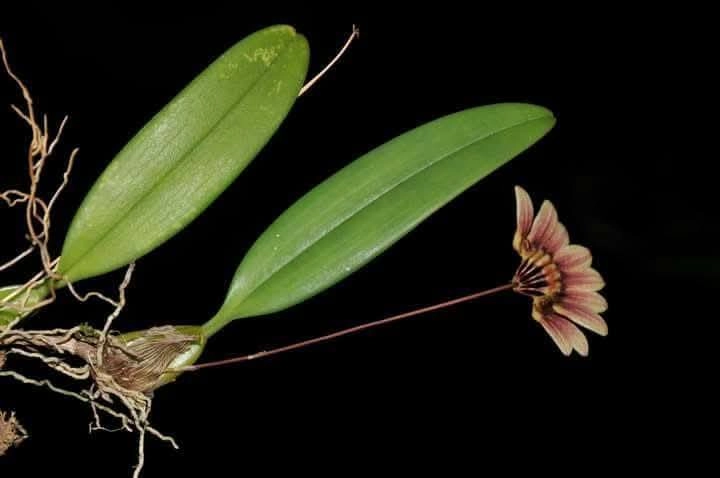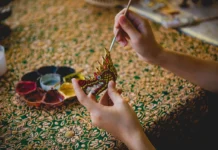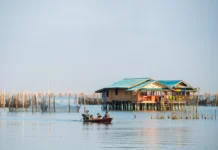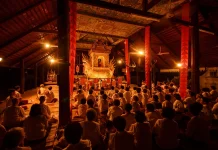High in the misty canopies of Southeast Asia’s tropical forests, where the air hangs heavy with moisture and every branch teems with life, an unassuming marvel quietly comes into bloom. Meet Bulbophyllum flabellum-veneris—or, as it’s known in Thailand, Singto Phad Daeng, the “Red Fan Orchid”, and globally as the “Fan of Venus”.
This rare and eye-catching species is part of the vast Bulbophyllum genus—the largest in the orchid family—and is found clinging to the moss-covered limbs of high-altitude trees from India to Sri Lanka, Myanmar, and Thailand. One of its most remarkable strongholds is Phu Langka National Park, a remote sanctuary tucked away in the far northeast of Thailand.
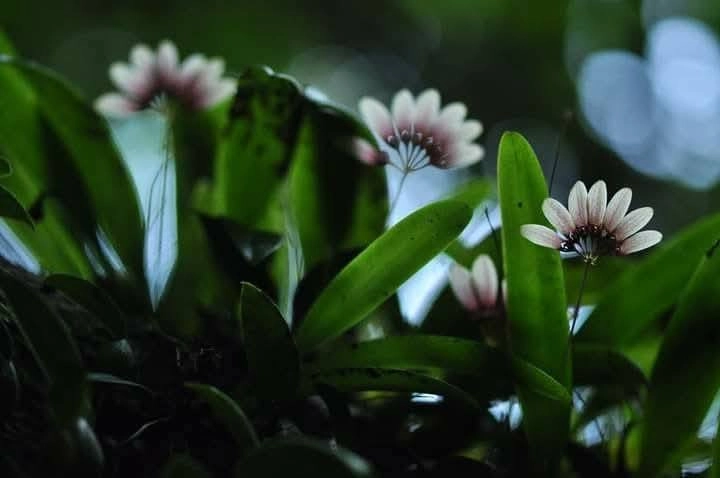
Growing at elevations between 200 and 1,200 metres, the Red Fan is very much a canopy-dweller, drawing strength from dappled sunlight and the steady humidity that defines these upland jungles. Its fan-shaped petals—subtly flushed with red—unfurl with an elegance that has long captivated botanists. Its Latin name alludes to classical beauty: flabellum for “fan” and veneris for “of Venus”.
But don’t be deceived by its dainty appearance. This orchid is a master of disguise. Its scent shifts between sweet and curiously ripe—mimicking decay to attract pollinating flies, which find themselves momentarily trapped within the flower’s hinged lip before being set free. It’s an ingenious adaptation, finely tuned to the forest’s rhythms.

Yet for all its cleverness, Bulbophyllum flabellum-veneris is increasingly under threat. Like many orchids, it faces growing pressure from deforestation and illegal trade. Its dwindling numbers make every sighting a privilege—and a poignant reminder of what’s at stake in the region’s vanishing wild spaces.
Phu Langka National Park, which straddles the provinces of Nakhon Phanom and Bueng Kan, remains one of the few places where the Red Fan can still be found growing wild. The park itself is a little-known gem, home to cloud forests, surreal sandstone formations, and walking trails that offer more solitude than spectacle. Visit during the cool season—between November and February—and you may be rewarded with a glimpse of this rare orchid, blooming high above the forest floor.
So if your travels ever take you to Thailand’s quieter northeast, don’t forget to look up. Nature’s most extraordinary moments often unfold in the places we least expect.
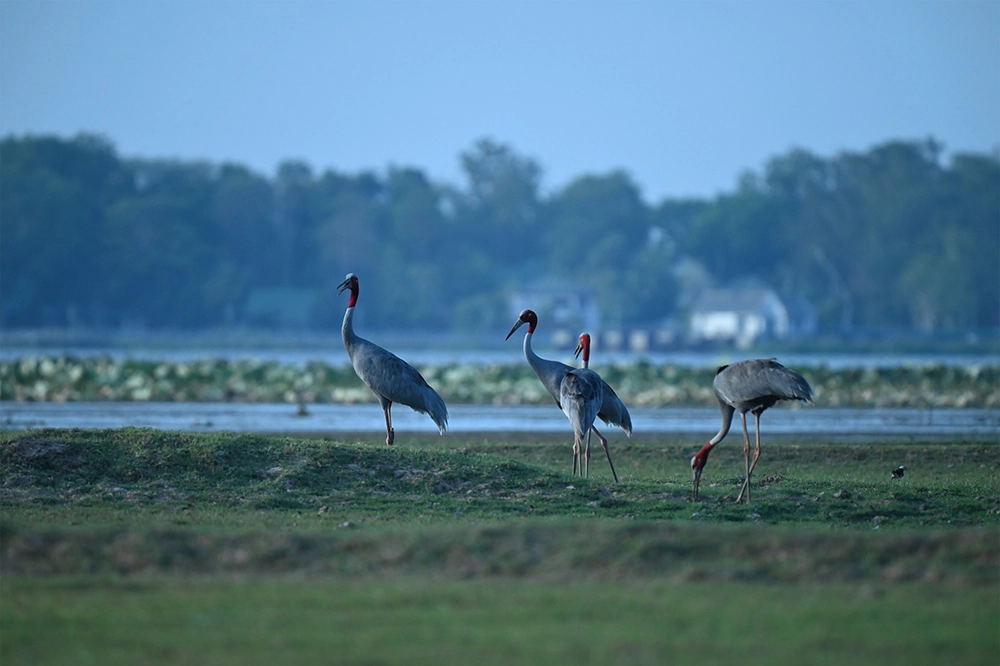
WILDLIFE
Grace in the Marsh
A mere 20-minute drive south of Buri Ram’s lively town centre lies the serene Huai Chorakhe Mak Reservoir—a tranquil haven for Thailand’s rare and majestic sarus cranes. Nestled within picturesque marshlands and rice paddies, this unspoiled sanctuary offers travellers a rare opportunity to witness these endangered birds thriving in a carefully restored natural habitat, coexisting harmoniously with local farmers.
>> Full story
Getting there:
Phu Langka National Park is around a 2.5-hour drive from Nakhon Phanom city. The nearest airport is in Nakhon Phanom, with regular flights from Bangkok. To explore the park fully, it’s best to hire a car or arrange a local driver.
Where to stay:
Basic campsites and ranger accommodation are available within the park. For more comfort, guesthouses and small hotels can be found in the nearby towns of Nakhon Phanom and Bueng Kan.
When to go:
November to February offers cooler temperatures, misty mornings, and the best chance of seeing wild orchids in bloom.
Image credit: Phu Langka Botanical Survey Team – Phu Wa, Phu Langka National Park, Nakhon Phanom Province, Thailand.

